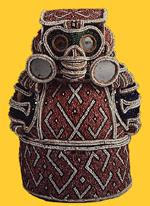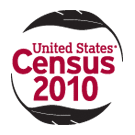By Domingo Turey Hernandez
Writing about “race” can be a very sensitive topic and while on many
people's mind, very few will speak on it. What is interesting is that many
persons are under the mistaken perception that “race” is a scientific fact.[i] Race and
“concepts of race” are social constructs, and therefore, some argue that “races”
are created to protect the interest of the group in power. Racial definitions
are impacted by religious and social mores. In short, concepts of race are
shaped in large by the powerful defenders of the dominant culture. Across many
of the World's cultures, identification of race is linked to the social
construct of “hyperdescent.”
Hyperdescent is the practice of classifying a child of “mixed race”
heritage as belonging to the race that is the more socially dominant of the
parent's races.[ii] In early colonial era Latin America, for example, the Spanish would classify
their children with indigenous women as Spanish. These children would not be
counted as “Indians” in any census. Another example would be when these
children of mix heritage would be classified as something all together
different, something always socially above the conquered or dominated race or
group. Examples of “racial classifications” under the early Spanish, Portuguese,
and French include Mulattos, Ladinos, Mestizos, Zambos, Lobos, etc. More often
then not, these persons were given better opportunities to own land get an
education and eventually marry into an ever “Whiter” level of Society. Australia,
for instance, practiced this form of hyperdescent
up to the 20th century. Under the Aborigines Act, children of mixed “blood” were taken away
from their Aboriginal families and put into White foster homes in an effort
re-educate them into the White Race.[iii] Those
promoting this system claimed this strategy would better prepare them for jobs
under White employers and lead them to eventual marriage to Whites.
Today, in most if not all of Latin America, classifying race via hyperdescent
continues to be the social norm. This is the opposite of “hypodescent” where a
mixed race person would be seen as belonging to the least socially powerful
group of the parent's race.[iv] An
example of this social classification is the "One drop rule" with regard
to “Black” ancestry. In essence, this U.S. born social
classification promot the view that any person with "one drop of Negro
blood" was considered black.[v] The "One drop rule" was a legal norm in parts of the 20th century United
States.[vi] Before that
time there were many examples in the U.S. of Blacks being accepted as Whites if they were
less than 1/8th or 1/16th Black.
Today,
many of the people who criticize Taino affirmation do so because they
come from an education that embraces the concept of hypodescent. To these folks
it doesn't matter how much European or Indigenous ancestry we may have, if we have
any African ancestry then we are Black by default. Any effort to identify
according to our family culture or even by the rules of hyperdescent is seen as
an attack on “Blackness.” This view disregards the basic human right of
self-determination. From a Taino perspective, self-determination is linked to
self-identity.
Self-determination
is about recognizing that many communities identify “race or ethnicity” using older
and more traditional ways. These views need to be respected by the more dominant
society.
Hyperdescent
and hypodescent both exist despite their flaws. Both views are designed to
dominate an oppressed group. One is designed to push the oppressed group into
extinction. The other keeps the oppressed group always visible but always the
"other" - never really equal. Both systems seek to control.
The
traditional Taino Jibaro way was and is the acceptance of another as relative
by the Family leader. This ideal made one family and family were those related
by blood, marriage, and relation to our extended family members. Taino is not
just blood, it is also culture and world view. It is traditions that refuse to
die even to this day.
Domingo Turey Hernandez is a Taino Jibaro elder
from Borikén (Puerto Rico). He is a member of the Caney Indigenous Spiritual Circle, the
United Confederation of Taino People, and iukaieke Guainia.
Endnotes
[i] Conrad P. Kottak, "FAQ",
Human Diversity and "Race", Cultural Anthropology, Online
Learning, McGraw Hill, accessed 30 Sept 2012.
[ii] Eviatar Zerubavel, “Ancestors and Relatives: Genealogy,
Identity, and Community,” Oxford University Press, 2012
[iii] Human Rights and
Equal Opportunity Commission's "Bringing Them
Home: Report of the National Inquiry into the Separation of Aboriginal and
Torres Strait Islander Children from Their Families" (1997)
[iv] See Conrad
P. Kottak’s "FAQ"
[v] James Davis "Who is Black? One Nation's Definition," Frontline, WGBH, accessed 30 Sept 2012.
[vi] For examples, see
the 1924 Racial Integrity
Act or the Laws of the State of Florida, First Session of the
Fourteenth General Assembly Under the Amended Constitution 1865–'6.
Chapter 1, 468 Sec.(1)-(3).











No comments:
Post a Comment